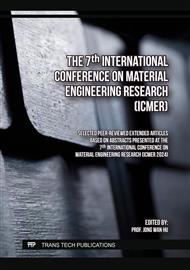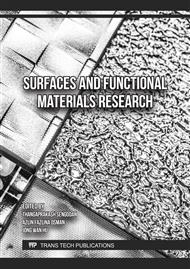p.27
p.39
p.59
p.83
p.91
p.97
p.115
p.125
p.133
The Investigation of Heat Resistance of Plant Fiber Sandwich Panel with Flame Retardant Core
Abstract:
This article addresses the burning test conducted on two different configuration of composite sandwich panel. Same flame-retardant material core but different face sheet material. The aim is to identify the heat resistance capability of plant fiber sandwich panel with flame-retardant core compare with traditional carbon fiber sandwich. There are researches of heat resistance behavior for carbon fiber sandwich panel with flame-retardant core [1] [2], but few on plant fiber. As plant fiber has been take a role in composite field, the heat resistance behavior of flame-retardant plant fiber sandwich panel deserves further investigated [3]. The test result indicates that, plant fiber with flame-retardant core sandwich has similar heat resistance behavior in the first stage of burning test with carbon fiber sandwich. However, after burning for 40 seconds, the heat resistance of plant fiber specimen attenuated dramatically than carbon fiber specimen. In addition, the heat induced delamination of two different specimens were also observed. Hence, decided the residual mechanical properties of the burnt specimens.
Info:
Periodical:
Pages:
91-96
Citation:
Online since:
December 2024
Authors:
Keywords:
Price:
Сopyright:
© 2024 Trans Tech Publications Ltd. All Rights Reserved
Share:
Citation:



